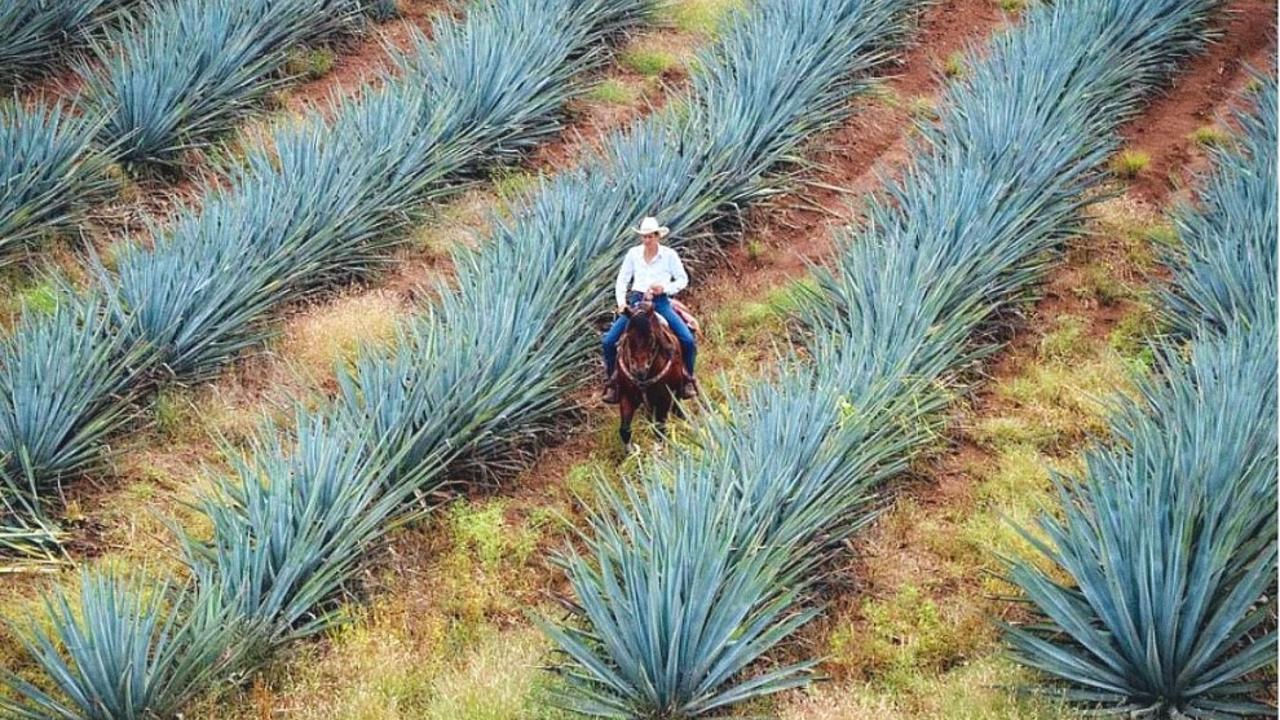Tequila production is something that requires a lot of love and attention. So much skill and attention to detail goes into this fun spirit before it even reaches the lemon and salt. But do you know how much? Read on to find out how tequila is made…
The blue agave plant

This ancient succulent is the key ingredient to making tequila. The teal-coloured plant is a close relative of aloe vera and thrives in dry, warm subtropical regions like Latin and South America. Named agave tequilana weber azul in Spanish, the blue agave plant can weigh as heavy as 100kg with leaves over four meters long. On average, however, the plant weighs anything from 30kg to 70kg after six to ten years of ripening. It's the special sugary agave juice held within the core that is used to make tequila.
Want to see the blue agave up close? Check our Tequila and Mezcal Expedition here.
Tequila-making process: 7 steps
Every tequila distiller has a slightly different production process. Some regions may have different regulations too, which means the process will differ from tequila to tequila. However, distillers follow a general 7-step process when making tequila.
1. Harvesting

The first step in the tequila-making process is to harvest the crop of blue agave. Harvesting is traditionally done by the hands of the jimadores. Jimadores are highly skilled workers, specifically qualified in cutting down the blue agave plant. A coa is used to cut away the thorny leaves (pencas) from the core (the piña), which is a special type of circular knife.
Once cut, only the piña remains, so called because of its resemblance to a pineapple. This is where the sugars are extracted during pressing. The piñas are left to bleed sap, indicating their readiness to be baked. On average, 7kg of piña is needed to make just a litre of tequila.
2. Baking

In order to extract the sugars, the piña must be steam baked in a horno to convert the starch into sugars. Hornos are big stone or stainless steel ovens but, traditionally, a fire pit lined with rocks is used. Baking can take anywhere from 12-48 hours in total. After, they’re left to cool for a further 48 hours. It’s important to slow bake the piñas as this ensures the tequila is sweet rather than bitter.
Tequila producers have a slightly different baking process from each other, using different temperatures, cooling times and baking times. Ultimately, this affects the end product.
3. Pressing and Extracting

Once the starch has been turned into sugar through baking, the piñas must be pressed and sugar extracted. The traditional method of doing this is in a tahona. The sugary agave juice is extracted via an ancient type of mill in a pit pulled around by mules. Agave fibers in the piñas are crushed by the mill and release sugars to be collected. Nowadays, most tequila distilleries use conveyor belts that pass the piñas along to a series of crushers, which do the same job but quicker.
Water is sprayed onto the piña fibers to ensure all the sugars are removed. This sugary liquid, called the mosto, passes through a pachaquil, which serves to remove the big particles. This has an influence on the flavour during fermentation and distillation.
If you've ever heard of mezcal, then you might well know about the mezcal vs tequila debate. A tahona is very popular in mezcal production even to this day. Whilst some tequila producers use this equipment and technique, it's much more common in the mezcal world.
4. Fermentation

In this step, the sugars are converted into alcohol by yeast. Before fermentation, however, the mosto makeup is checked to understand its content of fermentable sugars. This ensures that the fermentation will go successfully. The liquid is poured into large fermentation tanks and left to ferment for 1-3 days. Most distilleries used cultivated yeast for this process, but some traditional distillers use wild yeast present in the atmosphere.
Tequila labelled as '100% blue agave' means only agave sugar has been used in the fermentation. A ‘mixto’ tequila means other sugars, like cane sugar, has been mixed alongside the agave during fermentation.
5. Distillation

Now, the fermented liquid must be purified. Using two wooden vats or stainless steel distillation towers, the liquid will be twice distilled. The first distillation is called ‘deztrozamiento’, which translates to ‘smashing’ in English. This takes only a few hours and returns an alcohol of around 20% ABV called the 'ordinario'. The second step is the ‘rectification’. This takes a further three to four hours and distills the ordinario again. After this, the alcohol content rises to roughly 55% ABV and can now be used as tequila.
Blanco tequila can be bottled immediately after this stage, but this depends on the tequila distillery.
Distillers must carefully manage this process to achieve their desired tequila taste. Different notes in tequila evaporate at different temperatures. If the distiller wants to keep certain flavours, the temperature and duration of distillation must be carefully monitored. If you've been on a tequila tasting experience then you will have tasted the distillers efforts for yourself. Only the ‘middle cut’ of the twice distilled spirit is used to make tequila. Any remnants of the alcohol are used to be distilled again with another batch.
Up until this point, the whole process can take on average five days.
6. Ageing

Once distillation has finished some tequilas go through an ageing process. The length of ageing depends on the type of tequila the producer is looking to make. This process can take anywhere from days to years; it all depends on style. Blanco tequila is aged for the shortest amount of time, and sometimes not at all, whereas extra añejo tequila is aged the longest.
| Tequila style | Duration of ageing |
| Blanco |
2-3 weeks |
| Reposado |
2-12 months |
| Añejo |
1-3 years |
| Extra añejo |
3+ years |
Tequila is aged in white oak barrels which will have previously been used to mature another spirit, like Bourbon whiskey.
7. Bottling

After the ageing period, the tequila is ready to be bottled. This is the last step of the tequila-making process. If it’s made in Jalisco, then it must wait for a certification to be granted on its origin. Tequila produced elsewhere must simply state that it was made in Mexico, ‘hecho en Mexico’. The Tequila Regulatory Council (Consejo Regulador del Tequila) oversees this process and approves each Mexican tequila.
Learn more about tequila on our 'what is tequila' page here.
Where is tequila made?
Mexico is the only country that can produce tequila. There are five main regions for tequila production, in which the biggest is Jalisco, on the Pacific coast. The other four tequila producing regions of Mexico are Guanajuato, Nayarit, Michoacàn and Tamaulipas. There are regions beyond these five that produce other types of tequila but these are the main producers. Tequila made elsewhere in Mexico also use a different species of agave, not the weber blue agave plant.
Now you know how tequila is made, you might also be interested in making these six classic tequila cocktails!
Want to become a professional bartender and work with tequila behind the bar? Look into our bartender course to start your bartending journey. Who knows where you'll end up...

